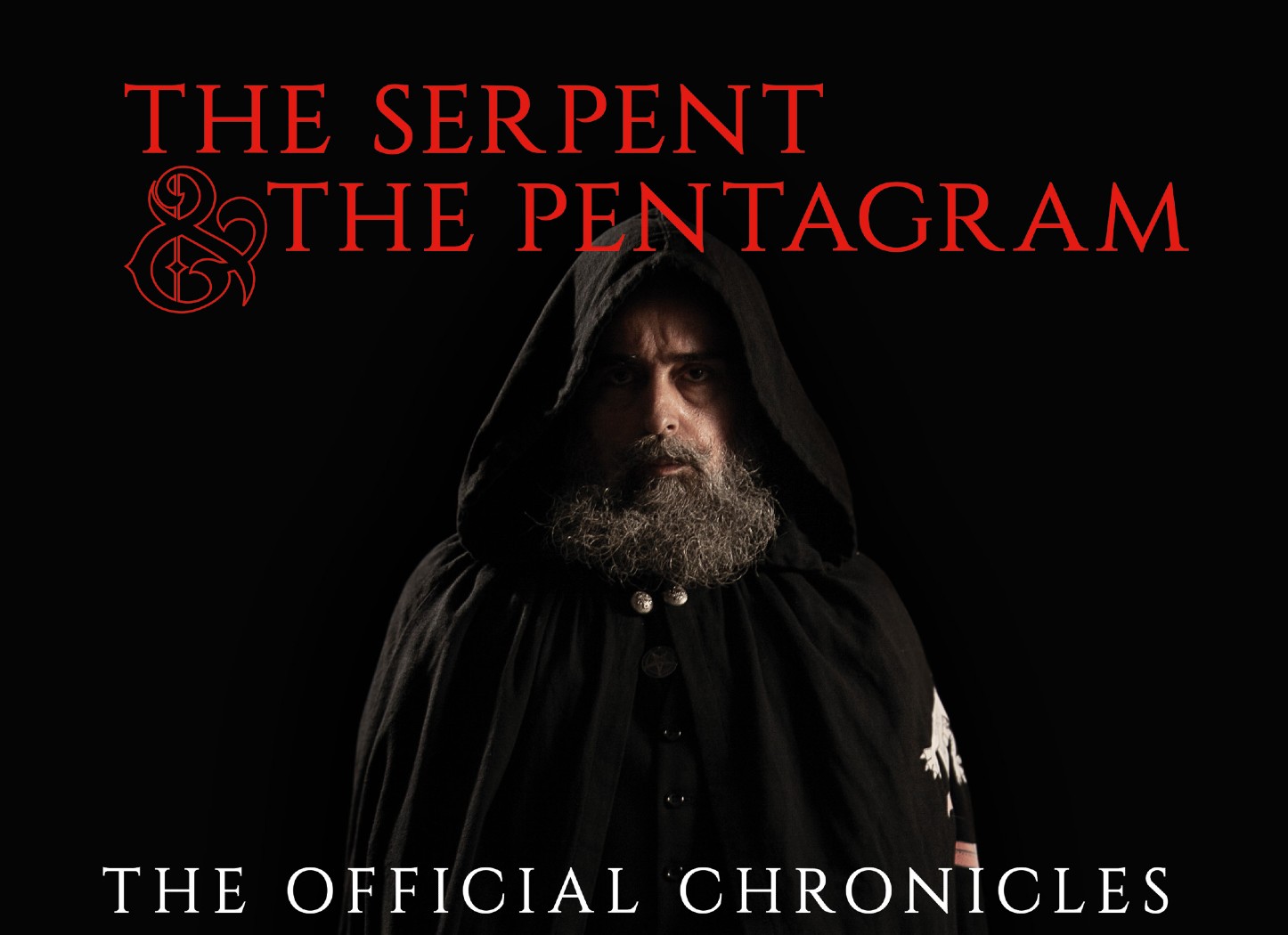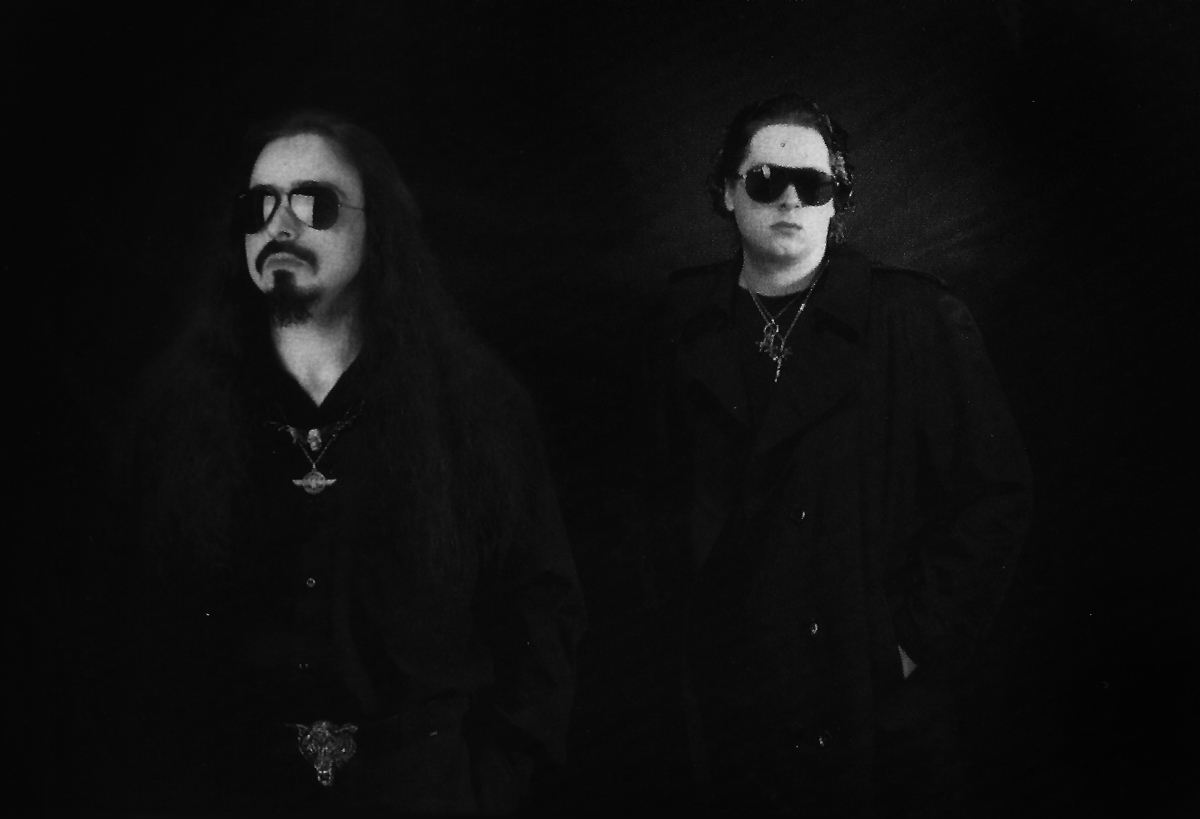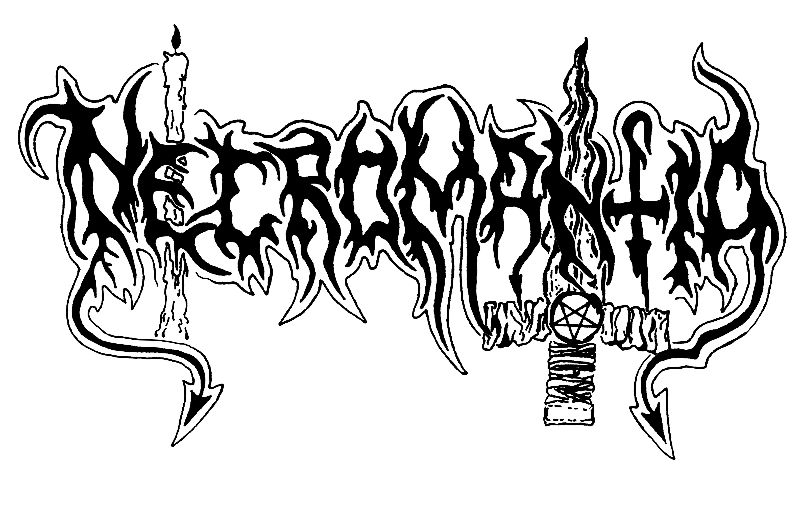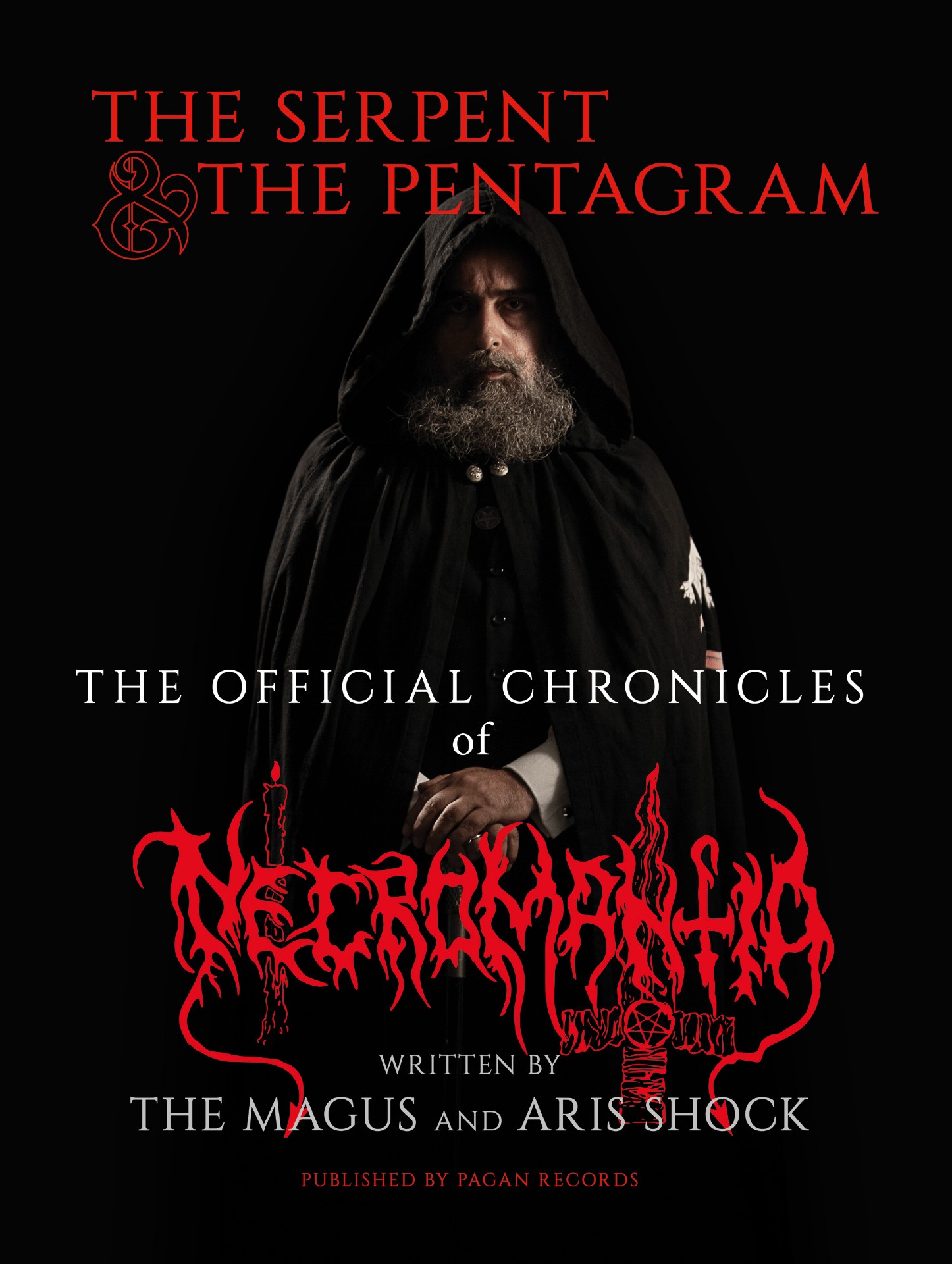Book Review
“The Serpent and the Pentagram: The Official Chronicles of Necromantia” by The Magus & Aris Shock [Book Review]
‘The Serpent and the Pentagram (Pagan Records) is no formulaic “metalhead journey” biography but rather a personal and intimate view of Necromantia’s career.

Necromantia is unquestionably a force to be reckoned with in the ever-mercurial genre of black metal. Also, their contribution to the more avant-garde and experimental end of the spectrum cannot be discounted in any way – not to mention the plethora of related acts (Rotting Christ, Thou Art Lord, Diabolos Rising, Yoth Iria, Septic Flesh and many more) that are, if not directly associated with Necromantia through shared members, at least Necromantia-adjacent through production, artwork or other artistic collaborations.
And that is what separates The Serpent and the Pentagram: The Official Chronicles of Necromantia from so many other biographical works. Dayal Patterson’s Cult Never Dies or Tero Ikäheimonen’s The Devil’s Cradle are really well-presented investigations into black metal from a top-down perspective but this volume, co-written by scene journalist Aris Shock and founding member The Magus, is intimate, personal and quite astounding in how it documents both the extent of Necromantia’s influence and the burgeoning extreme metal scene of 1980s and 1990s Greece.
- Necromantia
- Necromantia logo
Sakis Tolis’ Non Serviam: The Story of Rotting Christ is similar in its description of the time period, but it is very much a musical journey. The Magus’ story is far more nuanced and well-rounded, presenting himself as a more mature personality with interests and activities beyond just the music – even though this is the primary form of expression and red thread binding the narrative together. In this way, Confessions of a Heretic by Adam “Nergal” Darski (Behemoth) is a closer match, being more of a personal journey than a purely artistic one.
Yes, there are anecdotes and tales along the way, corresponding with a chronological discussion of Necromantia and its myriad of offshoots, but there is also a deep connection established with three essential external influences on the band’s development. The first, occultism, is a bone-deep theme throughout the book – both in the shared interest that brought the Magus and Baron Blood together, as well as their approaches to the occult, but also in the way it shaped their musical journey. There are also subtle hints and rabbit holes that colour the proceedings, leading a more avid practitioner into outside areas to research further that add to the air of mystery and result in a more convincing, authentic representation of the band members.
To The Depths We Descend – Necromantia’s final album – is something of a musical epitaph to the late Baron Blood.
The second is the acceptance of media influences: it is all too common for the kvlt-est of musicians to eschew any connection with the modern world and brand anything not explicitly satanic, pagan or obsessed with death as “poseur” music – all while living out role-playing game fantasies in the local forest. Contrastingly, Necromantia celebrates their influences, from pulp horror novels to classic literature to film and even contemporary television series.
We are, after all, inescapably connected to McLuhan’s global village of communication technologies, so the most responsible action in the face of overwhelming globalism is to proactively choose which of those technologies to embrace and how. The Magus’ willingness to cite influences as diverse as Game of Thrones or The Devils of D-Day shows someone who is comfortable with themselves and committed to their own identity, as well as mature enough to present that identity without excessive audience-based editing. Perhaps it is a generational thing, but a similar outlook and considered approach can be found in Primordial frontman Alan Averill’s Agitators Anonymous podcast, where he discusses everything from Irish political history to drunken misadventures, to the recording process, to cult figures like Aleister Crowley and their influence on extreme metal, while also holding meaningful philosophical conversations with his contemporaries.
This recording may be the original demo version of “Feast of Ghouls” from 1992, but the limited release of the book includes this as the A-side of a 7″ vinyl; a re-recording of “Faceless Gods” is on the B-side.
Building on that, the third influence well-represented in The Serpent and the Pentagram is the ongoing commentary from peers and contemporaries. Some – Rotting Christ’s Sakis Tolis or Septic Flesh’s Seth Siro Anton, for example – are local, direct connections, while others – from Cradle of Filth’s Dani Filth, Darkthrone’s Fenriz or Impaled Nazarene’s Mika Luttinen – show the global reach of Necromantia’s art, music and ideology. What is common to all, however, is the abiding respect for Necromantia and the Magus himself that all these contributors share.
In summation, if you’re more interested in a formulaic, ‘I was a lonely long-haired AC/DC fan in a small town with a second-hand Les Paul knockoff…’ kind of origin story, then The Serpent and the Pentagram is probably not for you. If you want a profound, honest depiction of a personal journey, complete with unprecedented tragedy (in the passing of Baron Blood in 2019), then this is the metal biography you’ve been looking for. It’s insightful, touching and intriguing – and the direct register it is written in makes its impact immediate, honest and convincing.
Author: The Magus & Aris Shock
Publisher: Pagan Records
Release Date: March 17, 2022
Format/Length: Hardcover, 224 pages
-

 Alternative/Rock1 week ago
Alternative/Rock1 week agoThe Warning Shake the Foundations of a Sold-Out Leeds Stylus [Photos]
-

 Alternative/Rock1 day ago
Alternative/Rock1 day agoThe Cruel Knives Headline Top Night of British Rock at Manchester’s The Lodge [Photos]
-

 Alternative/Rock13 hours ago
Alternative/Rock13 hours agoThe V13 Fix #012 w/ Dååth, Unearthly Rites, maybeshewill and more
-

 Alternative/Rock1 week ago
Alternative/Rock1 week agoThe V13 Fix #011 w/ Microwave, Full Of Hell, Cold Years and more
-

 Indie1 week ago
Indie1 week agoDeadset Premiere Music Video for Addiction-Inspired “Heavy Eyes” Single
-

 Folk1 week ago
Folk1 week agoKatherine Perkins Strikes the Right Tone with Her “Hold On” Music Video Premiere
-

 Country1 week ago
Country1 week agoBrooke Ashton Chats About Her “Someone” Single, Creative Process, and More!
-

 Culture4 days ago
Culture4 days agoRob Lundberg’s “Uncontaminated Sound – The Interviews” EP #67 w/ Joshua Farinella of The Whistleblower









